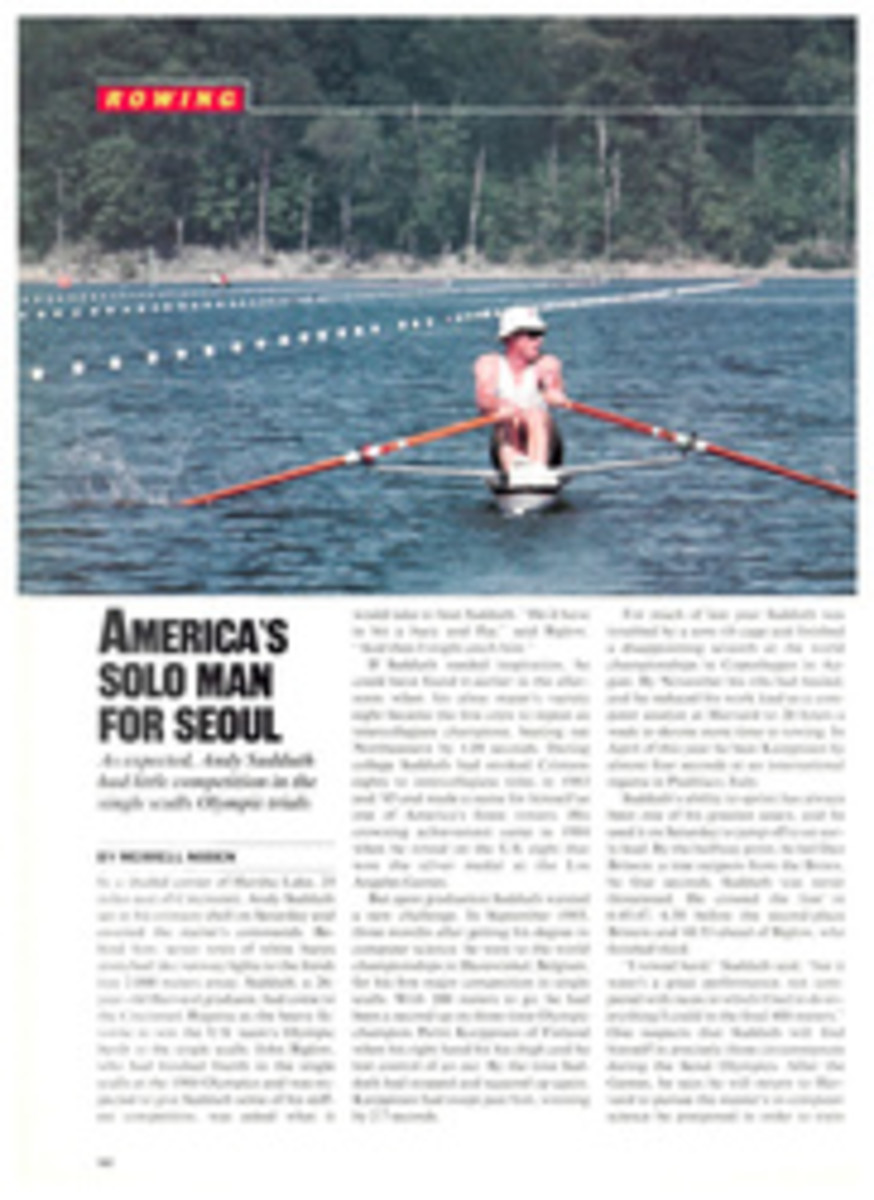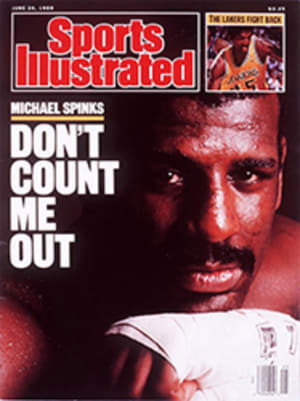
WE'VE RUN OUT OF MILERS
In 1967, at the Amateur Athletic Union (AAU) Track and Field Championships in Bakersfield, Calif., Marty Liquori, a senior at Essex Catholic High in Newark, N.J., ran a 3:59.8 mile on the cinder track. He was all but ignored. Up front, Kansas sophomore Jim Ryun set a world record of 3:51.1 in winning the race. No one paid much attention to the slender, dark-haired high schooler who finished a mere seventh.
The 11,600 people who watched Liquori that night should be forgiven for not treasuring his performance. They could not have known that more than two decades later we would still be waiting for the next schoolboy miler to break four minutes. "I thought it was no big deal, since guys had done it the previous three years," recalls Liquori.
In 1964, Ryun, then a junior at Wichita (Kans.) East High, had become the first high school runner—he is still the only nonsenior—to break 4:00, with a 3:59.0. As a senior the next year, Ryun had lowered his best time to 3:55.3, which still stands as the schoolboy record. In 1966 Tim Danielson of Chula Vista High in San Diego had run 3:59.4. That Liquori's performance, in the words of Track & Field News, "met with a lack of awe" did not surprise the author of that race report in the least: "Four-minute miles just aren't what they used to be, even down on the high school level."
How naive that appraisal now seems. In the 21 years that have passed, no high school runner has even come close to 4:00. The best effort was by Richard Kimball of De La Salle High in Concord, Calif., who ran a 4:02.4 in 1974. Yet over the same period, the world record for the mile has been broken eight times and lowered by 4.78 seconds: from Ryun's 3:51.1 to Steve Cram's 3:46.32 in 1985. Furthermore, the 10 fastest miles ever run by high schoolers were all done in the four-year period from 1964 to '67. Schoolboy mile times haven't just stagnated; they've regressed. The question, of course, is why.
One reason is lack of opportunity. There just aren't as many mile races as there were in Ryun's day. Most major meets—the Penn Relays and The Athletics Congress championships, for example—have switched from the mile to the 1,500 meters, the standard Olympic distance. But that excuse isn't as valid as it might at first seem. The fastest 1,500 ever clocked by a high school runner other than Ryun is the 3:43.4 Matt Centrowitz of Power Memorial Academy in New York City ran back in 1973. Using the standard formula to convert 1,500 to mile times—adding about 18 seconds—one comes up with a time that is still more than 4:00.
Liquori offers several explanations. One is the popularity of "LSD" (long, slow distance training), which was the mantra of the mid-1970s running boom. The gut-wrenching track sessions that had been the staple of a miler's regimen were replaced by gentle aerobic runs. "You can't have that philosophy," says Liquori, "and still run a good mile—at any level."
Liquori continues, "In the '70s, the Finns were winning all the gold medals [in the distance events]." In other words, Americans weren't winning them, so there weren't many U.S. middle-distance heroes for young athletes to emulate. It can't have been purely by chance that high school miling hit its peak on the heels of the 1964 Olympics, in which Bob Schul and Billy Mills won the only gold medals Americans have ever won at 5,000 and 10,000 meters, respectively. The period from 1964 to '67 was a heady time to be an American runner, and as Tracy Walters, who coached Gerry Lindgren to fourth place among alltime high school performers (4:01.5 in 1964), points out, "Greatness begets greatness. People take their cue from the people they rub shoulders with."
Ryun blames the 21-year dry spell on fundamental changes in our society. "There's been a shift in attitude," he says. "Back in the '60s, if a coach said, 'I want you to go out and run 60-second quarters,' you said, 'O.K., Coach,' and went out and did it. You were ready to run through a brick wall for your coach. Now kids tend to question more."
In the '60s athletes like Ryun and Liquori had little choice but to enter "open" competitions against seasoned runners. The fact that there are many more postseason high school meets now may actually work against a sub-four schoolboy mile. "When Jim first broke four minutes, he was eighth in the race," says Bob Timmons, who coached Ryun to his first sub-four and is now the track coach at Kansas. "High school runners aren't getting into that kind of race these days."
Almost every year some long-legged kid comes striding into our imaginations, raising our expectations. For instance, back in 1976 Thorn Hunt of Henry High in San Diego set a high school indoor record of 4:02.7. Mike Stahr of Carmel (N.Y.) High ran a 3:46.99 1,500—worth about 4:04 for the mile—as a junior back in 1982. Just two seasons ago John Trautmann of Monroe-Woodbury High in Central Valley, N.Y., established a U.S. schoolboy record for 3,000 meters at the Penn Relays. All of them were expected to threaten the four-minute barrier in the spring of their senior years, yet none of them did. Hunt lost his outdoor season to injury, Stahr didn't get any faster until he reached college, and Trautmann came down with mononucleosis and sat out the rest of the year.
Last year's crop of middle-distance runners was the deepest in years. Jason Pyrah of Willard (Mo.) High, Paul Vandegrift of Archbishop Kennedy High in Conshohocken, Pa., and George Kersh of Pearl (Miss.) High all showed themselves to be extremely talented and all were expected to give the magic barrier a scare. However, when the season was over, Pyrah's best time was 4:04.25 and Vandegrift's 4:04.65. Kersh became the first high schooler to break 1:47 for the 800 (1:46.58), but he managed only 4:08.17 for the mile.
This year's class is not as strong. The fastest schoolboy miler in the country in 1987 was junior Bob Kennedy of Westerville (Ohio) North, who ran 4:11.96. That's respectable, but hardly inspires much hope that we'll see a four-minute mile by a schoolboy in the near future.
In December 1963, on the eve of the Golden Age of high school middle-distance running, Timmons made a bold prediction. "I feel certain," he said, "we are just a few years away from witnessing a high school boy not only running four minutes but also losing the race as well to another prep athlete." Today, Timmons is convinced that the major barrier to someone's running four minutes is psychological. Unfortunately, he says, that barrier grows more intimidating with each passing year.
"It's getting remote now," says Timmons. "It's been so long that people have forgotten what it's like to do it."
And to see it done.
PHOTO
TRACK & FIELD NEWS
Timmons (left) believes Ryun excelled in high school because he had premier competition.
PHOTO
ESSEX CATHOLIC HIGH SCHOOL
Liquori's sub-four-minute mile in 1967 is the most recent by a schoolboy athlete.

